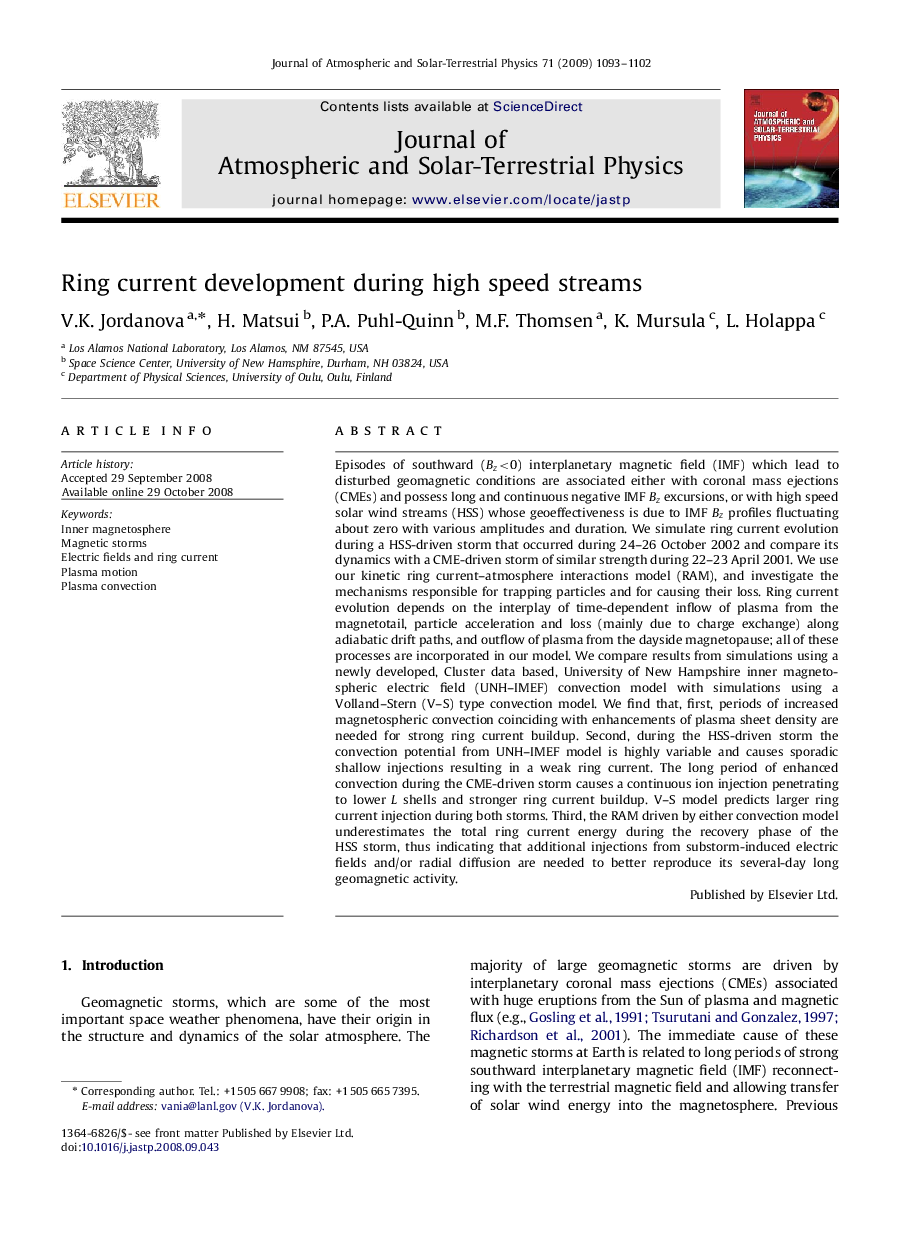| Article ID | Journal | Published Year | Pages | File Type |
|---|---|---|---|---|
| 1777488 | Journal of Atmospheric and Solar-Terrestrial Physics | 2009 | 10 Pages |
Episodes of southward (Bz<0Bz<0) interplanetary magnetic field (IMF) which lead to disturbed geomagnetic conditions are associated either with coronal mass ejections (CMEs) and possess long and continuous negative IMF BzBz excursions, or with high speed solar wind streams (HSS) whose geoeffectiveness is due to IMF BzBz profiles fluctuating about zero with various amplitudes and duration. We simulate ring current evolution during a HSS-driven storm that occurred during 24–26 October 2002 and compare its dynamics with a CME-driven storm of similar strength during 22–23 April 2001. We use our kinetic ring current–atmosphere interactions model (RAM), and investigate the mechanisms responsible for trapping particles and for causing their loss. Ring current evolution depends on the interplay of time-dependent inflow of plasma from the magnetotail, particle acceleration and loss (mainly due to charge exchange) along adiabatic drift paths, and outflow of plasma from the dayside magnetopause; all of these processes are incorporated in our model. We compare results from simulations using a newly developed, Cluster data based, University of New Hampshire inner magnetospheric electric field (UNH–IMEF) convection model with simulations using a Volland–Stern (V–S) type convection model. We find that, first, periods of increased magnetospheric convection coinciding with enhancements of plasma sheet density are needed for strong ring current buildup. Second, during the HSS-driven storm the convection potential from UNH–IMEF model is highly variable and causes sporadic shallow injections resulting in a weak ring current. The long period of enhanced convection during the CME-driven storm causes a continuous ion injection penetrating to lower L shells and stronger ring current buildup. V–S model predicts larger ring current injection during both storms. Third, the RAM driven by either convection model underestimates the total ring current energy during the recovery phase of the HSS storm, thus indicating that additional injections from substorm-induced electric fields and/or radial diffusion are needed to better reproduce its several-day long geomagnetic activity.
